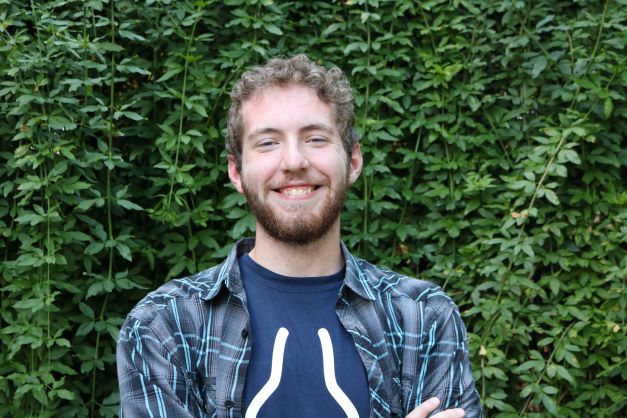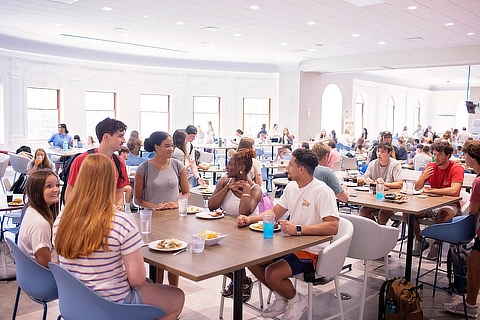Over the summer, Samford University took part in a complete renovation and overhaul of the Caf in the upper UC, reimagining the space from the ground-up.
This year, Samford has partnered with a new food service provider, Aramark, instead of their previous vendor, Sodexo. Aramark and those connected to the project came in with new ideas to transform the Caf into a more open and welcoming food hall.
Wade Walker, director of business services, was surprised at how much they were able to accomplish. “We knew going into the RFP process that we would renovate some, but we didn’t know how far we’d be able to take it. And to take it as far as we did, it was sort of a dream.”
Jeff Poleshek, assistant vice president for operations, planning and construction, is pleased with how the new Caf is being received. “It’s more of a social space now than just a place to come and eat,” he explained. “And now that it’s essentially finished, it’s nice to see how active it’s been.”
Construction on the project began on the last day of the spring semester, and with only 100 days to complete the massive undertaking, many were doubtful that everything could be completed in time for the fall semester.
Poleshek laughs, thinking back about what they were able to accomplish. “It was quite a project to do in a hundred days.”
We had a hundred days. Our goal was to—a lot of people didn’t believe that we could get it done, because it was a very large project, and when you totally gut something and you totally build it back, it does take a long time. So to get all that done in 100 days was truly a blessing, and for us to get it done, the Lord’s hand was for sure on it. So, it was totally changed, total gut job of the building.
Wade Walker
The project cost 10 million dollars. This money was used to entirely tear down and rebuild the second floor of the UC. The first 20 days were spent gutting the space, and the next 80 were dedicated to putting everything back together.
“It was 10 million dollars that we spent in a hundred days, which was pretty intense,” Poleshek admitted. “It touched about 20,000 square feet of the building, which I think was really important. Some of the most important features, furnishings, about 4 or 5 additional kitchens. I think it was just—and I think the notion of just changing it from a dining space to a food hall, that that concept was really important. The space was open to all, available to all, and you didn’t necessarily have to swipe to get in, to take advantage of this great central space that we have on campus to use.”
Walker is optimistic about the Caf’s future. “It’s meant to be a place to be engaging with students, and for students to fellowship with each other. That’s the plan for it. So the more that we progress and get comfortable with our stations, get comfortable with the people that are there and engaging the students, we’ll find more and more ways to get interactive.”

Contributing Writer






